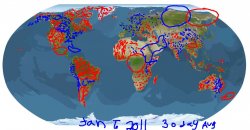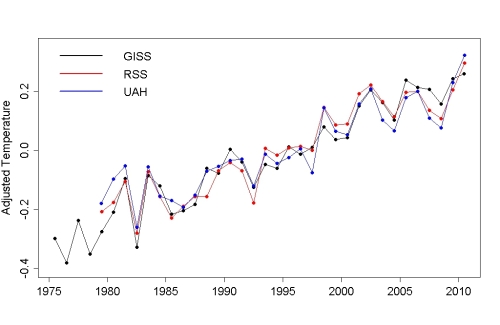ENSO effects are time lagged. in much the same way that the longest day of the year is not the hottest. the 2010 la nina is 7.5 months less 6 months lag time. looks like temp anomalies will be going down for a while
Nina and ninos have there effect within 3-4 months. Meteorology and research shows this. But this one because of possible other factors(ever warmer earth? was a weird)
well Matthew, at least you are acknowledging there is a lag.
as the old joke goes- "now we are just haggling over the price"











